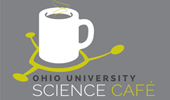The Environmental and Plant Biology Colloquium Series presents Dr. Christopher G. Oakley on “The genetic basis of adaptation and the constraints imposed by genetic drift” on Friday, Jan. 30, at 11:50 a.m. in Porter Hall 104.
Oakley is Postdoctoral Research Associate at Michigan State University.
Abstract: A major goal of evolutionary biology is to understand the factors contributing to adaptation. Genetic tradeoffs, where adaptation to one environment comes at a fitness cost in an alternate environment, are an intuitive explanation for the common observation that populations and species are adapted to their local environments. My research combines molecular and quantitative genetic approaches with field and lab experiments to address questions regarding the genetic basis of adaptation and factors that limit adaptation. My dissertation research used natural variation in population size of the endangered plant Hypericum cumulicola to test predictions about the consequences of genetic drift. One main finding was that crosses between small populations resulted in very strong heterosis, implicating drift in the fixation of deleterious recessive mutations, which could reduce population viability. My postdoctoral work investigated the genetic basis of local adaptation in natural populations of the model plant Arabidopsis thaliana from Sweden and Italy. I used Quantitative Trait Locus (QTL) mapping of fitness to determine the genetic basis of local adaptation and, for the first time, demonstrated a common role for fitness tradeoffs. I subsequently mapped the genetic basis of freezing tolerance in the lab and identified multiple freezing tolerance QTL that can explain tradeoffs in total fitness. This work has provided new insight into the genetic and phenotypic mechanisms of the process of adaptation in nature.
My current and future research plans center on three main questions. First, what are the genes and molecular mechanisms underlying local adaptation and fitness tradeoffs? I have developed Near Isogenic Lines (NILs) that I will use in lab and field experiments to fine map genomic regions controlling freezing tolerance (lab) and fitness tradeoffs (field). Second, what is the genetic basis of heterosis? Understanding heterosis can provide unique insight into the historical effects of genetic drift and is of broad importance in agriculture and conservation. I am employing heterozygous NILs in A. thaliana spanning the genome to map the genetic basis of this phenomenon. Finally, what is the genetic basis of cleistogamy, a floral dimorphism that is likely to be an adaptation for mixed selfing and outcrossing? My continuing goal is to address major questions about the evolutionary genetics of natural plant populations by combining modern molecular techniques and classical experimental approaches.



















Comments